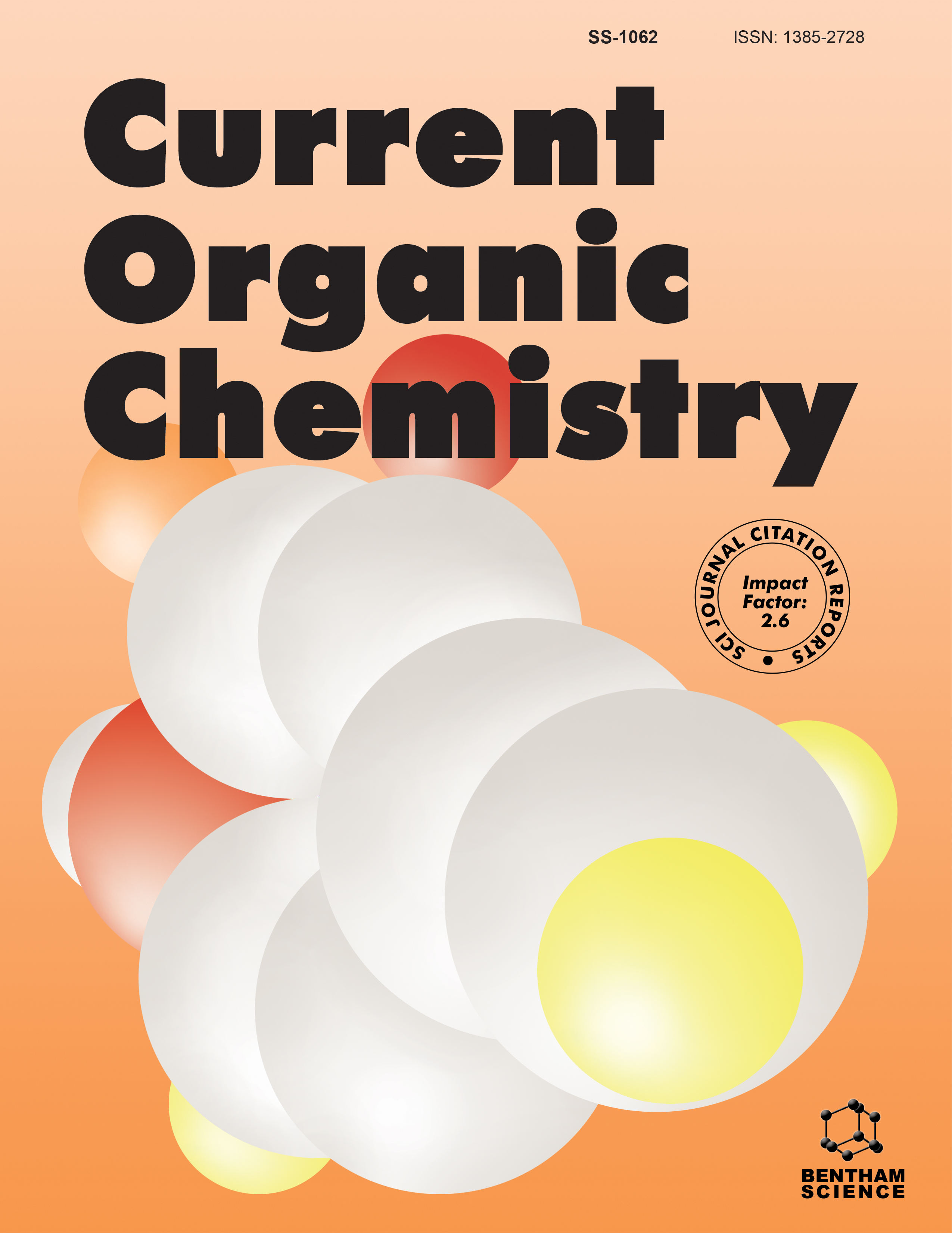- Home
- A-Z Publications
- Current Organic Chemistry
- Previous Issues
- Volume 21, Issue 27, 2017
Current Organic Chemistry - Volume 21, Issue 27, 2017
Volume 21, Issue 27, 2017
-
-
Aromaticity in the Light of Magnetic Criteria
More LessAuthors: Manoswita Homray, Anirban Misra and Pratim K. ChattarajMagnetic criteria of aromaticity have been analyzed which are currently the most popular methods, considering the circular delocalization of electrons as the genesis of aromaticity. The concept of aromaticity as was visualized by Kekulé to the latest development in the field has been discussed. The other criteria for defining aromaticity such as the chemical behavior, the structural behavior and the energetic criteria ar Read More
-
-
-
Topological Modeling of Carbon Nano-lattices
More LessAuthors: Bogdan Bumbacila, Ottorino Ori, Franco Cataldo and Mihai V. PutzCarbon can form many allotropes. Because of the Carbon's valence and due to the atom arrangements in lattices, some of the allotropes can adopt different shapes and spatial conformations like planar sheets (graphene sheets), nanocones, nanotubes, nanobuds, nanoribbons, nanocages (pseudospheres or spheroids - fullerenes). Their extraordinary physical properties are promoting these structures as candidates with diff Read More
-
-
-
Structure-to-function Relationship of Carbohydrates in the Mechanism of Lysosomal Storage Disorders (LSDs)
More LessAuthors: Mirela Sarbu, Claudia Cozma and Alina D. ZamfirIn the past decades, the advancement in system biology together with the expansion of analytical and biochemical techniques, pawed the way for investigating the complicated concept known as glycomics. The complexity and diversity of sugar chemical structures following the complex enzymatic biosynthesis, as well as all changes that take place in the glycome during growth, development and disease of the organism, Read More
-
-
-
Molecular Devices and Machines: Hybrid Organic-Inorganic Structures
More LessAuthors: Margherita Venturi, Mirela I. Iorga and Mihai V. PutzObjective: In this review we present the general principles that are at the basis of the construction of artificial molecular devices and machines and the main characteristics of these systems with a special focus for the kind of energy inputs needed to make them work. Methodology: By the bottom-up (chemical) approach science and technology move from micro- to nanoworld, and due to the nature of inputs (light and che Read More
-
-
-
Effect of the Organic Groups on the Performance of Hybrid Silica Based Materials used as Supports for Biomolecules
More LessAuthors: Zoltan Dudas and Laszlo AlmasyImmobilization of biomolecules in porous supports, especially in silica matrices, is probably one of the most successful processes in biomaterials synthesis in the last three decades. The flexibility and versatility offered by the sol-gel process, ensured its leading position in the biomolecules immobilization. Functionalization with organic groups of the silica precursors leads to so-called organically modified silica gels. While ther Read More
-
-
-
Electronic Structure of Linear Polyacenes
More LessLinear polyacene hydrocarbons C4n+2H2n+2 consisting in the linear condensation of n aromatic hexagonal rings, have been used in prototypical studies of electronic delocalization, relevant for conduction effects. The results of density functional theory (DFT) calculations were interpreted by analytical simplified models, such as Huckel simple orbital schemes and the Heisenberg spin Hamiltonian, generating a Valence Bond ph Read More
-
-
-
The Tandem Claisen Rearrangement in Organic Synthesis
More LessAuthors: Xueqin Zhang, Gangliang Huang and Siqi HuangBackground: Claisen rearrangement is an important reaction, and some "variants" are brought out under the inspiration of Claisen reaction, e.g. Bellus-Claisen rearrangement, Eschenmoser-Claisen rearrangement, Ireland-Claisen rearrangement, and Johnson-Claisen rearrangement. Objective: The application of tandem Claisen rearrangement in organic synthesis was analyzed and discussed herein. Method: We chose Read More
-
-
-
Superparamagnetic γ-Fe2O3-SiO2 Nanocomposites from Fe2O3-SiO2-PVA Hybrid Xerogels: Characterization and MRI Preliminary Testing
More LessBackground: In order to be suitable for biomedical applications, the iron oxide based magnetic materials require appropriate characteristics such as superparamagnetic behaviour, high saturation magnetization, high specific surface area, small particle size and narrow distribution. Objective: The objective of the present study was to find the optimum conditions for obtaining iron oxidesilica nanocomposites with superparamag Read More
-
Volumes & issues
-
Volume 29 (2025)
-
Volume 28 (2024)
-
Volume 27 (2023)
-
Volume 26 (2022)
-
Volume 25 (2021)
-
Volume 24 (2020)
-
Volume 23 (2019)
-
Volume 22 (2018)
-
Volume 21 (2017)
-
Volume 20 (2016)
-
Volume 19 (2015)
-
Volume 18 (2014)
-
Volume 17 (2013)
-
Volume 16 (2012)
-
Volume 15 (2011)
-
Volume 14 (2010)
-
Volume 13 (2009)
-
Volume 12 (2008)
-
Volume 11 (2007)
-
Volume 10 (2006)
-
Volume 9 (2005)
-
Volume 8 (2004)
-
Volume 7 (2003)
-
Volume 6 (2002)
-
Volume 5 (2001)
-
Volume 4 (2000)
Most Read This Month
Article
content/journals/coc
Journal
10
5
false
en


